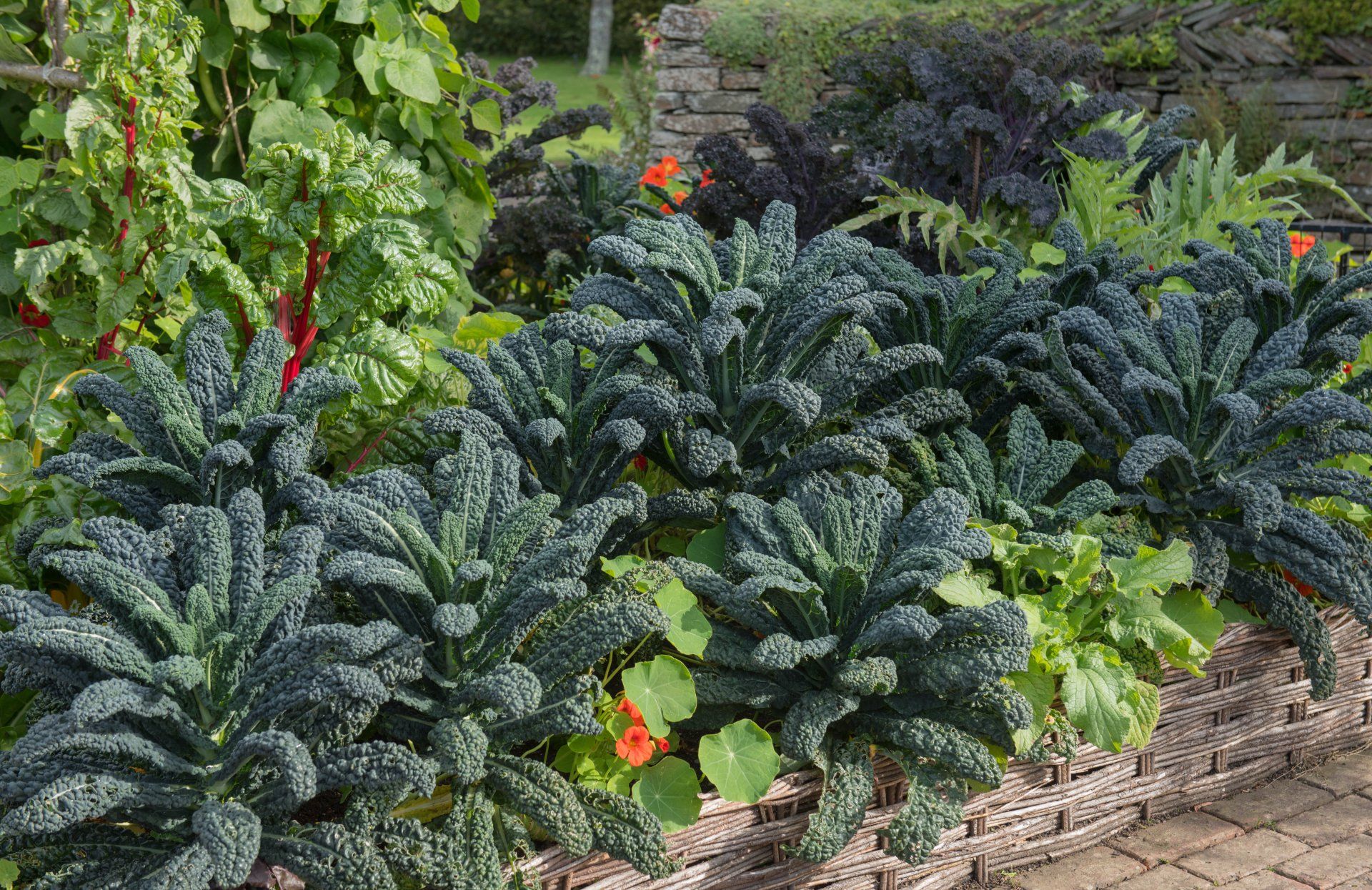Kale
KEY INFORMATION
Height: to 90cm
Spread: to 60cm
Hardy annual
Sun or semi-shade
Germination: 4 - 7 days
Harvest: From 11 weeks
VARIETIES AVAILABLE FROM COLLIE FLOWERS
Garlic Kale
SOWING & GROWING SCHEDULE
Sow Indoors: n/a
Sow Outdoors: March to May
Plant Out: n/a
Harvest: July to March

Growing Guide
Kale is easy to grow, good looking and productive, providing both mini salad leaves and tasty greens for cooking or adding to smoothies. It’s particularly valuable in winter, providing fresh leaves in even the coldest weather.
Direct sow outdoors into final position for growing, or in a well prepared seedbed for transplanting to their final positions later on. Sow at a depth of 1cm and distance of 25cm between rows. Kale is often sown in a seedbed, then later moved to its final growing position because it is slow to grow and takes up space during the peak growing period.
Kale plants can be transplanted to their final positions approximately 5 weeks from sowing (or later noting above). When transplanting kale, plant it slightly deeper in the ground than it was in the seedbed.
Plant kale at a distance of 60cm apart and cover with a protective netting or fleece to prevent attack from birds and insects. Water the plants thoroughly after planting. Prepare the soil in early spring by adding plenty of well rotted farmyard manure to the soil to improve its structure and fertility. Apply lime to acid soils to reduce the acidity and lessen the risk of clubroot.
Garlic Kale: sow and harvest all year round
Garlic Kale is a hardy and flavoursome green, originating from Ethiopian cabbage. Successional sowing will provide continuous luscious greens to add to your favourite dishes. Harvest from January to December, as this variety of kale can be grown through the winter in a greenhouse.
Kale is amongst the most nutrient-dense foods, providing us with essential vitamins and antioxidants. Garlic kale has a crisp texture, with a pleasant kale flavour and slightly garlic aftertaste. Good for salads when young and tender, as leaves get larger they can be steamed. Immature flower stems can be cooked like broccoli.
Seeds can be sown all year for baby leaf production inside on a windowsill in trays of good quality, moist seed compost. Sow seeds thinly, cover with 1cm compost and keep moist, not wet. When seedlings have produced their second true leaf you can begin to harvest as a cut-and-come-again salad leaf.
Seeds can also be sown directly into beds which they will grow between and grown on for larger plants which can be cooked like spinach. Alternatively, sow seeds in over winter in a cold greenhouse, for fresh leaves through winter and early spring.
Sow indoors: November to January
Sow outdoors: February to October
Harvest: all year round
TOP TIPS
Kale leaves are best used when freshly picked. However, they can be blanched and then frozen to store for later use.Start to harvest young leaves from the top of the plant from September onwards. Side-shoots are formed after the main crown is harvested and these are ready for use in February and March. Pick shoots that are 10–15cm long and still young.
For salad leaves Kale can be sown indoors all year round. Harvest 30 days from sowing during summer and up to 60 days during winter.
Tall varieties should be supported with a sturdy bamboo cane, especially in exposed sites. This will prevent winter gales buffeting these top-heavy plants and potentially loosening the roots.
